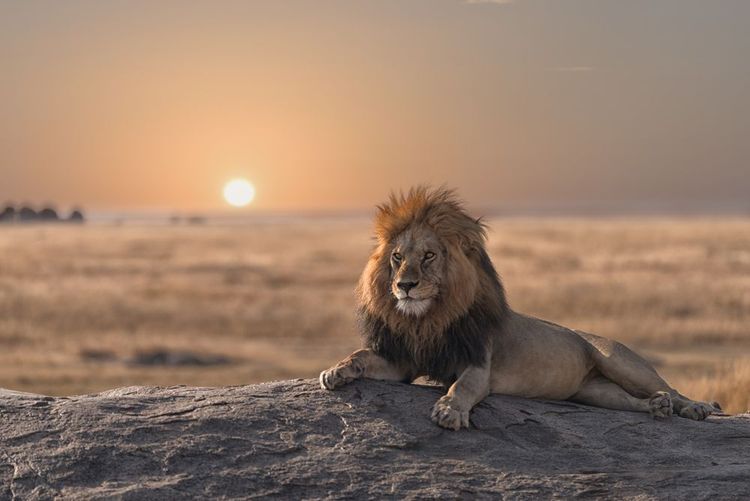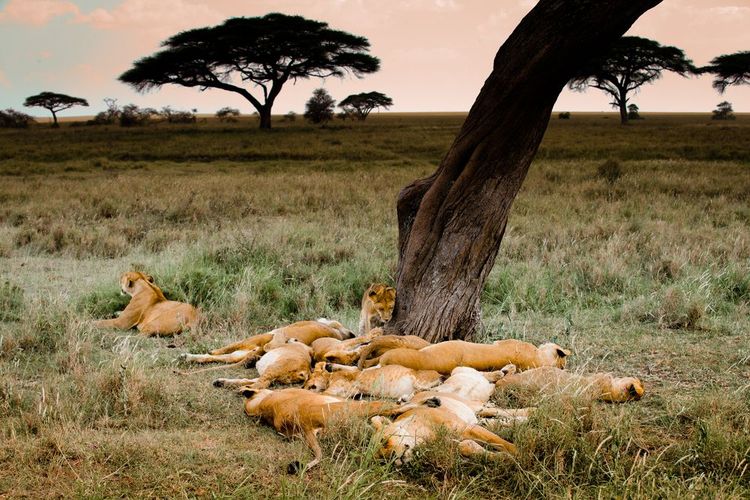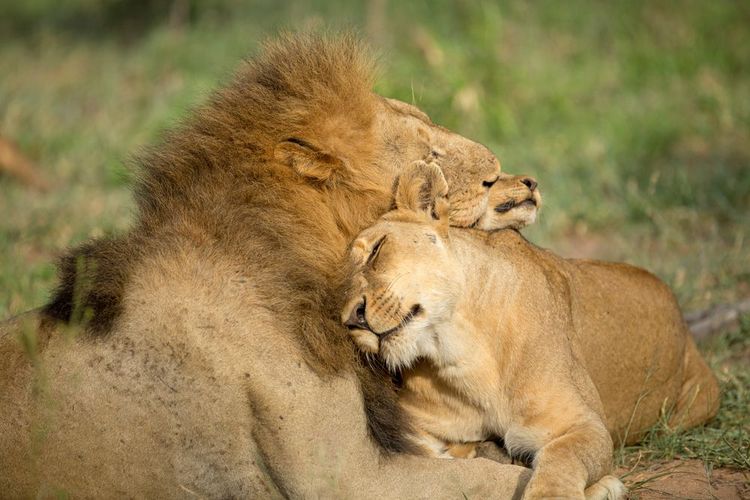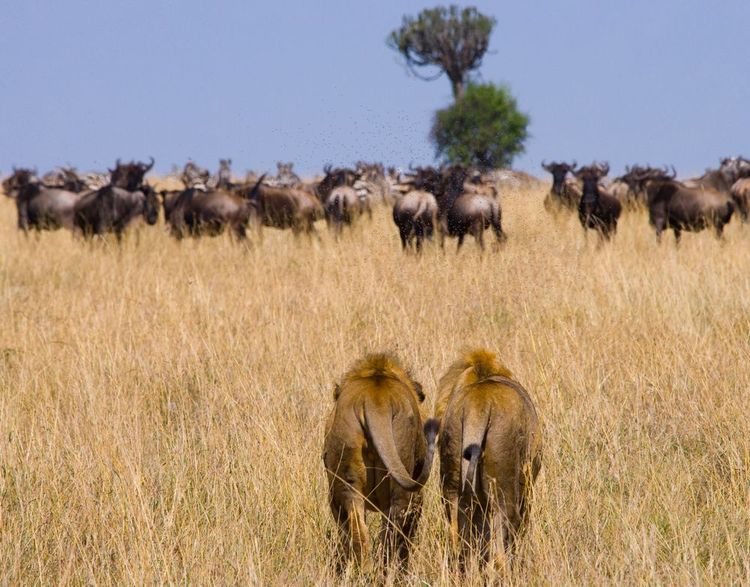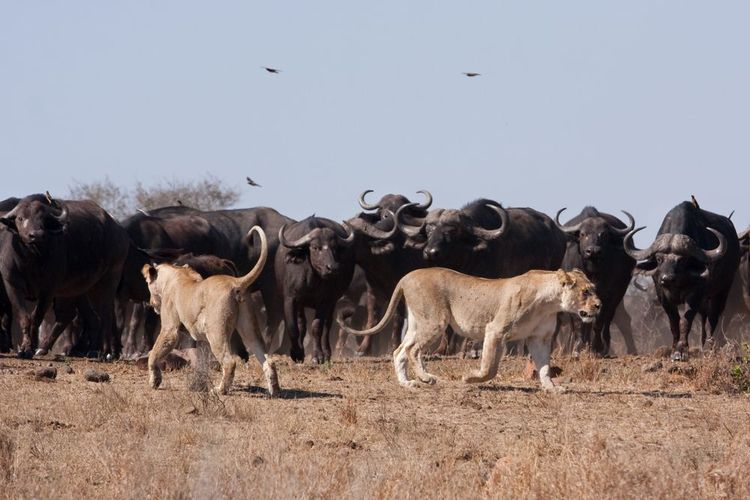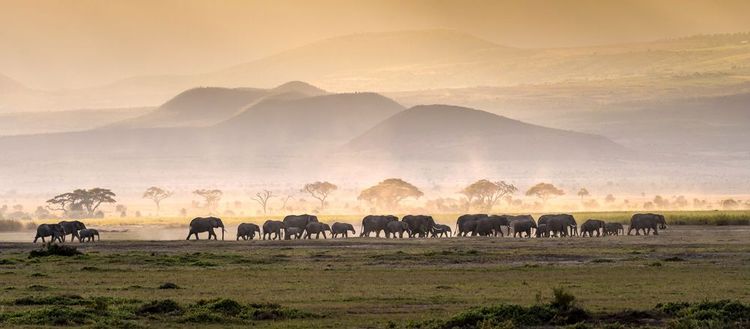Tigers, leopards and cougars are solitary, while the lion is the only feline to live in a group. It is a gregarious animal, living in clans, and a family can include up to 30 individuals. The community is permanent and includes related females as well as unrelated males. The dominant male tolerates very little competition and the troop is made up of 1 to 7 males maximum against 1 to 18 females. At the age of 2 or 3, the young lions are eventually driven out of the group. A few groups of bachelors can be seen forming coalitions, sometimes accompanied by females and their cubs. The young males then try to take control of existing groups, their bonds are very strong and they travel long distances together, not respecting the territories delimited by the clans. To survive, they feed mainly on carrion. In fact, compared with females, they have little success in hunting.
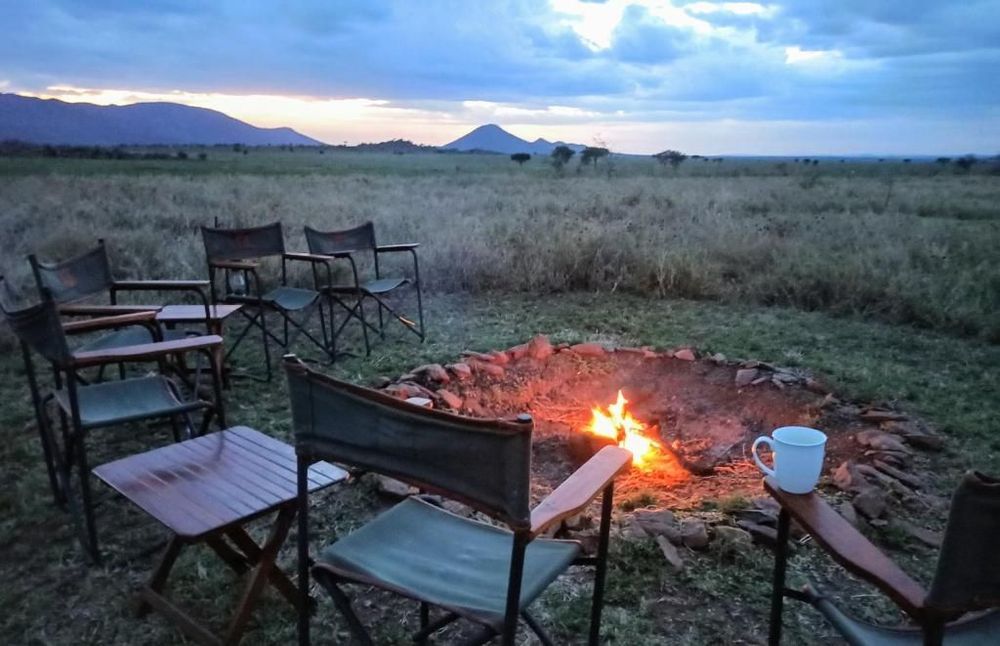 Serengeti
Serengeti
